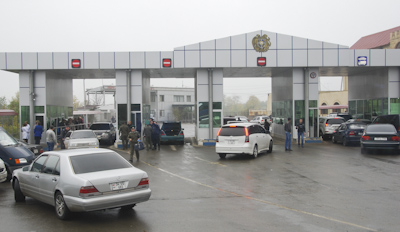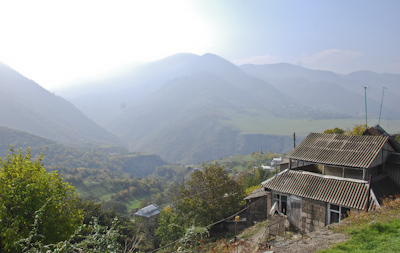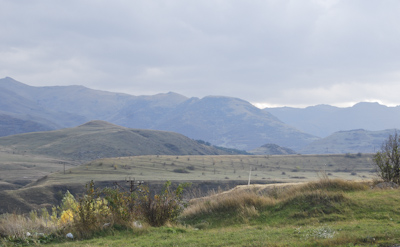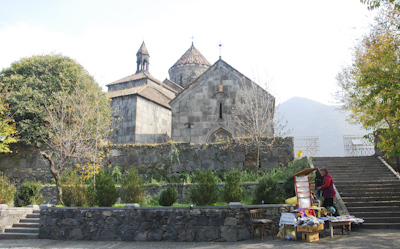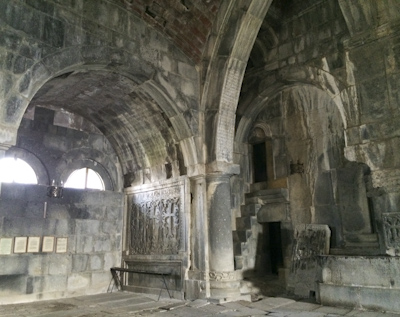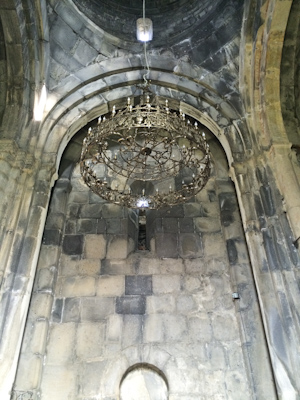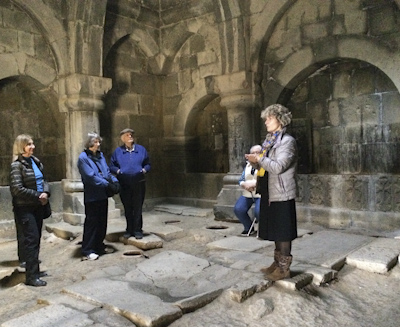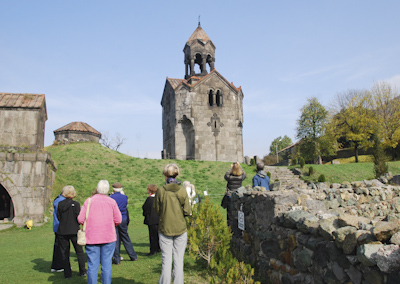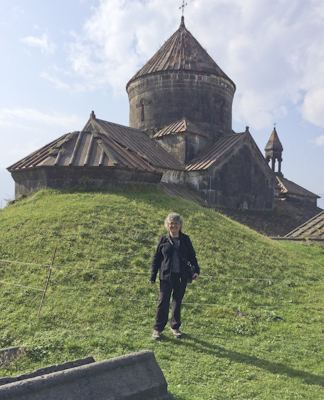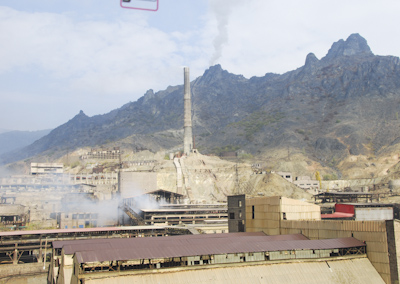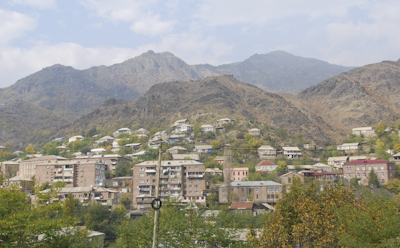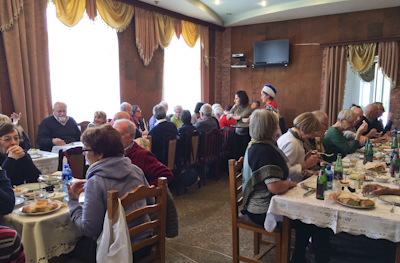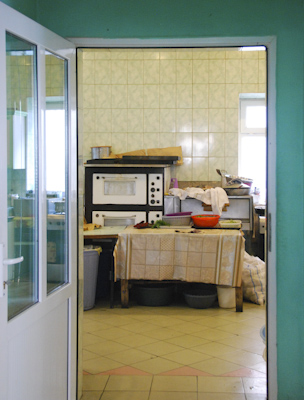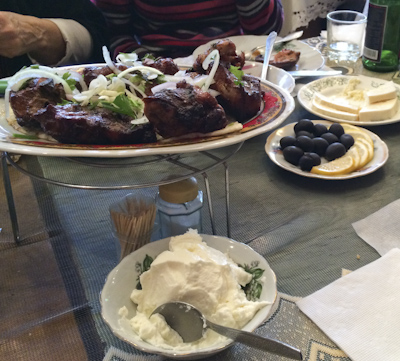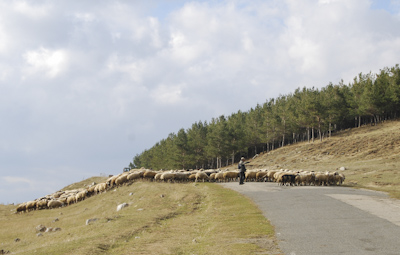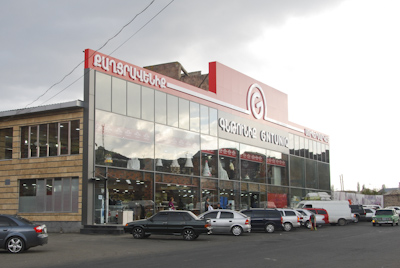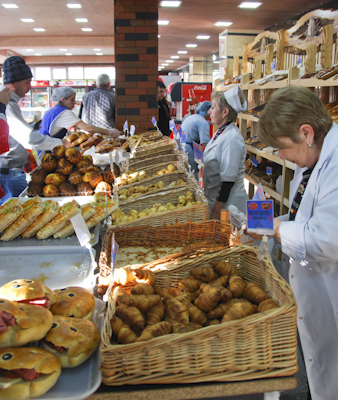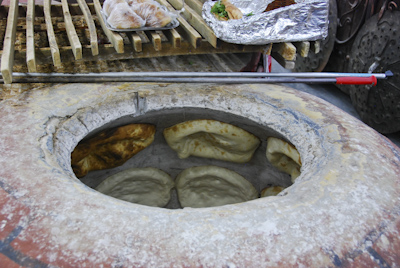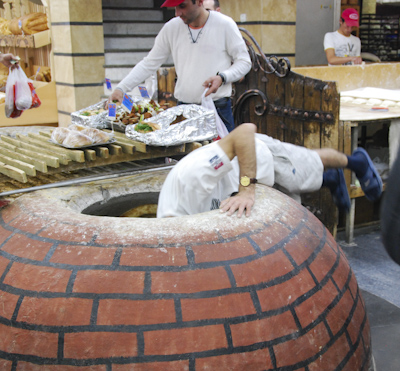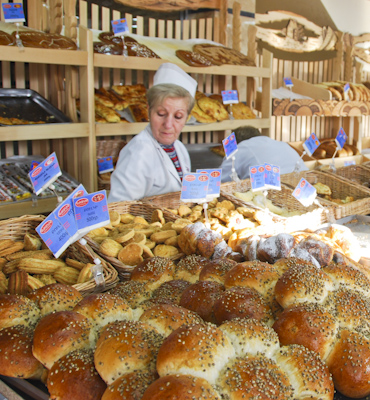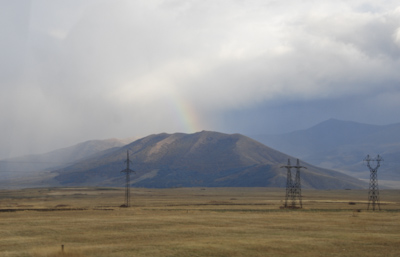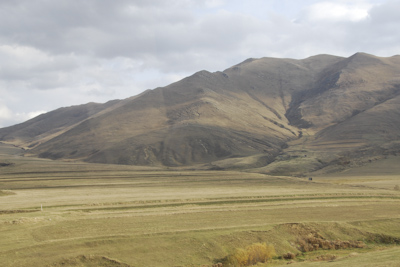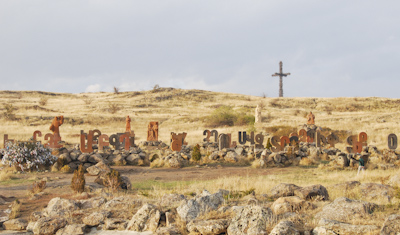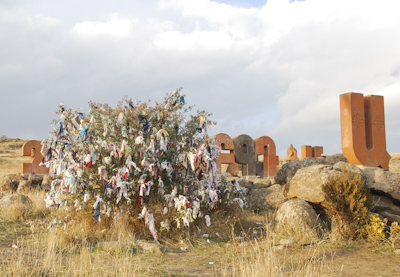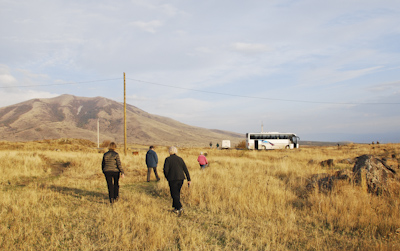Saturday, October 25, 2014 Cool and rainy in the morning
We got an early start to drive to the Georgian – Armenian border. We got off the bus, said goodbye to our Georgian driver, collected our luggage, received an exit stamp from Georgia, then walked across the border into Armenia. On the other side we waited in line to have our visas checked and stamped. Then we boarded an Armenian bus. We met our local Armenian guide, Irina Astvatztokmanian.
The Lesser Caucasus Mountains form the natural border between the two countries and they were magnificent in a blaze of golden fall colors. It stopped raining as we drove south into the Lori Region of Armenia.
Northern Armenia is mountainous and rocky with deep valleys and high peaks. The sky cleared as we approached Haghpat Monastery which was built high on a hilltop reached by a steep solitary road with many narrow hair-pin turns. The monastery was founded in the 6th century, however most of the remaining structures were built during the 10th through 13th centuries.
The view from the top of the mountain looking across the valley was breathtaking. After we explored Haghpat Monastery, the coach drove down the road. We continued south for several miles passing villages, manufacturing plants, and abandoned factories.
After a while, we stopped at a small roadside restaurant for lunch. Two other tour groups joined us for lunch: one from Italy and another group from Denmark.
We drove through rural northern Armenia passing stone houses and subsistence farms. Sheep and cattle herds grazed along the road.
In the town of Aparran, we stopped at a wonderful bakery to watch bread being made and to buy fresh pastries. I learned that Armenians also used the tandoor to bake bread. The cookies and pastries were delicious!
We continued driving south along the highway through the beautiful Armenian countryside toward Yerevan, the capital city. We acknowledged our good luck to see a rainbow in the distance.
We stopped at Armenian Alphabet Park which is between the towns of Aparan and Artashavan. The park consisted of huge stone sculptures of the 36 letters in the Armenian alphabet. The letters were invented by the Armenian theologian, Mesrop Mashtots, in 405 AD. He also created the Caucasian Albanian and Georgian alphabets. The invention of the alphabet preserved the ancient Armenian language and literature which helped strengthen nationalism.
We walked among the letters and looked at the “Wishing Tree” where people had tied their wishes. We finally reached Yerevan by early evening and checked into the Ani Plaza Hotel. I wish I could remember the name of the restaurant where we ate dinner because we had a lamb stew treat baked into a pastry shell.
